Clancy Tucker's Blog, page 157
March 25, 2018
26 March 2018 - THE MOST BEAUTIFUL BIRDS IN THE WORLD
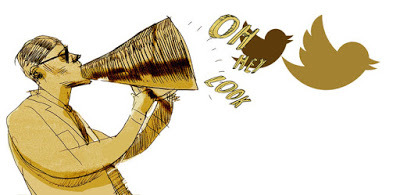
THE MOST BEAUTIFUL BIRDS IN THE WORLD
G'day folks,
Which is the most beautiful bird in the world? Who could possibly can answer this question? Nobody, because, majority of birds in this world are beautiful. However, some species definitely have striking features which could outrank the rest. Here the list of some of the most beautiful birds in the world.

With an impressive length of 100 cm, hyacinth macaw is the largest of all flying species of parrots in the world. They inhabit in semi-open areas and savanna grasslands of Northern Brazil. Their population have been declined in past few years. Today, less than 5000 Hyacinth Macaws left in the world. Habitat loss and hunting are main threats to hyacinth macaw.
Besides the large size, Hyacinth Macaw is famous for their striking cobalt blue plumage with bright yellow rings around the eyes. Due to this stunning coloration, Hyacinth Macaw also called as ‘blue macaw’. They also have a beautiful long tail and strong and curved black bill.
With proper training, Hyacinth Macaws could be an excellent pet. To make them comfortable, You should also give them a lot of space. They are very playful and not so good at imitating words like some other members of Macaw family.
You should be aware of powerful bill of Hyacinth Macaws. It can’t be guaranteed that they won’t bite you even with proper caring and training. The Hyacinth Macaws also can be extremely loud when they are in a group.

Wood duck is probably the most stunningly colorful waterfowl in the world. The male bird has a metallic, purplish-green head and crest. Their belly is white and chest is dark-red. Along the neck, they have attractive, narrow white stripes. Their wings are patterned blue and black.
Female wood ducks are not so colorful as males. They have grey-brown head, white belly and white speckled breast. Male bird uses their colorful plumage to attract female bird during breeding season.
Wood ducks inhabit in marshes, wooded swamps and streams across North America. With unique coloration and shape, the wood ducks are also one of most easily recognizable birds in the North America. Unlike other water fowls, wood ducks nest in tree holes and form flocks.

Bohemian waxwing is a medium-sized songbird with distinctive crested head and black masks. They are brownish-grey overall and wings have white and yellow edging. Thus, Bohemian Waxwing is among the most beautiful passerine birds in the world.
Bohemian waxwings inhabit in boreal forest across North America and Eurasia, mostly in Canada and Alaska. In winter, they migrate in large flocks to the Northwest parts of the United States. They nest on tree branches. Both male and female Bohemian Waxwings are known for their high pitched calls. They mainly feed on insects and berries.

Blue jays are one of the most intelligent and beautiful birds in the world. They found across forests of Eastern and Central North America. The blue jays have stunning blue, white and black plumage. The most distinguishing feature of this songbird is its noisy ‘jay jay’ like calls. They can also imitate the call of other species of birds.
Besides the striking appearance, blue jays are famous for their intelligence. They may steal nestlings and eggs of other birds. Blue jays also mimic the voice of hawks to deceive other birds. It is said to blue jays in captivity also could mimic human speech and the voice of other pets.
Blue jays are social birds that found in small flocks. But in winter, during migration to the South, they form large flocks of hundreds of blue jays. Their migration behavior still remains a mystery among scientists. Not all blue jays migrate during winter, some birds remain in their natural territory. Also, no blue jays migrate every year.

Atlantic puffin is a small, well-adapted seabird that found across the coast of Northern United States and Eastern Canada. Atlantic puffins are also known as ‘sea parrot’ due to their huge, multi-colored bill and penguin-like coloration. Atlantic puffins spend most of their lives on sea. Their water-resistant feathers keep their body warm while swimming. They flap their wings to swim on the surface and underwater.
Atlantic puffins have excellent diving capability. They can reach up to 60 m on diving. They typically hunt sand eels, capelins and hakes. Atlantic puffins are also excellent fliers. They can reach a speed of 55 miles an hour by flapping wings up to 400 times per minute.
They breed in each summer and spring on the islands of North Atlantic Ocean. They build nest using feathers and grasses in the burrows on the cliffs. The female lays only one egg and it takes 45 days to hatch it. After hatching, adult puffins leaves the nest for finding food for the chicks. They bring back small fishes for their chicks. Atlantic puffins can load between 10-30 fishes in their huge beaks.

Keel-billed toucan is among the birds with most amazing bills in the world. They have huge, multi-colored beak that will reach up to 20 cm in length. Due to their colorful bill, keel-billed toucan is also known as rainbow-billed toucan. Their beak is a mixture of green, red and yellow colors.
In spite of heavy appearance, beak of the keel-billed toucan is hollow and light. It is made up of one type of proteins called keratin. They use this large, colorful beak to attract female during the breeding season and also as a defensive weapon.
This beautiful bird inhabit in the forest across Central and South America. They have a length of 20 cm and weigh up to 4 kg. Their plumage is mostly black with a yellow throat and chest. Keel-billed toucans are poor flyers due to their heavy wings. They can only move between the tree branches by hopping.
Keel-billed toucans are very social birds. They form small flocks that contain up to thirty birds. They live in either natural or woodpecker made holes in trees. Their diet mainly consists of insects, lizards, and eggs.

The Peacock is actually the name of male bird of peafowl family. There are three types of peafowls in the world – Indian, Congo and green peafowl. The Indian peafowls are the most common type of peafowls found around the world. Peacocks (male birds) are renowned for their colorful display of iridescent tail feathers.
Peacocks can grow up to 5 feet in length, which make it one of the largest flying birds in the world. In fact, the long tail of a peacock makes 60% of its total length. The colorful tail feather display of peacocks is probably the most beautiful courtship display among bird family.
On courtship display, peacock spread out its enormous tail feathers to display the colorful patterns and eye spots. Some peacocks have a lengthy tail and more eyespots than others. The female peafowl or peahen also chooses a peacock with lengthy tail and more eye spots. Depending on the angle of reflection of light, color of the tail feathers of peacock looks different.
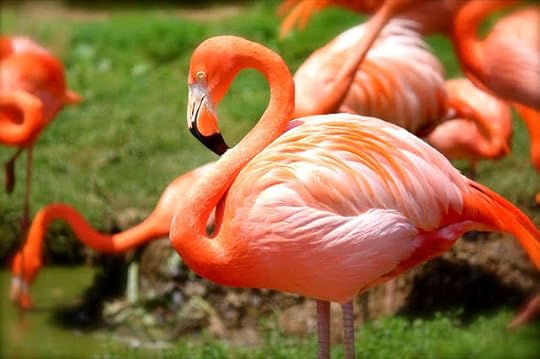
Flamingois probably the most recognizable wading bird in the world. The stunning red-purple colored plumage itself make flamingo so special among birds. There are 6 different species of Flamingos in the world. They found on every continent except Antarctica.
An adult flamingo measure 4-5 feet in length and up to 3.6 kg in weight. Their neck is long and lean and has a distinctive downward, bend beak. The legs of flamingos are also very long, measure between 30 and 50 inches. The long leg and specially adapted beak let them to catch small fishes, larvae and planktons from the mud.
Flamingos live in large colonies that include thousands of members. Their striking red-purple color is due to the food they eat. Their diet mainly consists of brine shrimp, plankton, and blue-green algae. Flamingo also spends hours on oil up their plumage from the special glands using their plumage. It helps them to keep their plumage always in good condition.
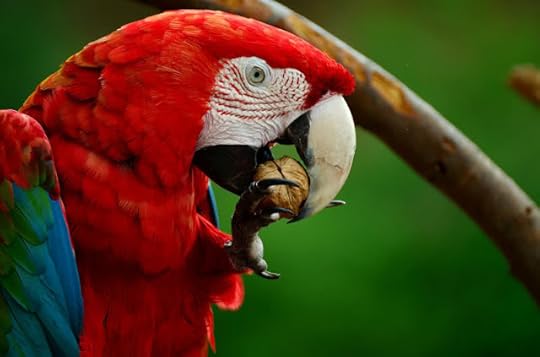
Scarlet macaw is one of the most beautiful and largest member of macaw family. They inhabit in humid evergreen forests across Central and South America. They are famous for their colorful plumage. They have bright red plumage with a blue back. Their upper wings are yellow and edged with green color.
The strong, curved beak is another noticeable feature of a scarlet macaw. Its upper part is white and the tip is black. An adult scarlet macaw has a length between 80-90 cm and weighs up to 1.5 kg. They are excellent fliers and can reach up to a speed of 35 mph. Scarlet macaws also live for a long time. They have a lifespan of 40-50 years. It is said to be the scarlet macaws in captivity can live up to 75 years.
The magnificent, scarlet macaw is also among the most intelligent birds in the world. In captivity, they can easily learn words, sounds and tricks. It is said to be a well trained scarlet macaw could even distinguish the colors and shapes.
Scarlet macaws are also very loud parrots. They make different types of voices such as screeches and squawks. Their diet mainly consists of nuts, seeds, fruits and insects. With the strong, curved beak, scarlet macaws can easily break any nuts.

Clancy's comment: This article and list was compiled by someone else. However, their choice is stunning, eh? And, you could probably add another hundred birds to the list. Hard to beat the Peacock though.
I'm ...


Published on March 25, 2018 14:19
March 24, 2018
25 March 2018 - THIS DAY IN HISTORY

THIS DAY IN HISTORY
G'day folks,
Ever wondered what happened on this day in history. Maybe it's your birthday? Well, read on ...
In one of the darkest moments of America’s industrial history, the Triangle Shirtwaist Company factory in New York City burns down, killing 145 workers, on this day in 1911. The tragedy led to the development of a series of laws and regulations that better protected the safety of factory workers.
The Triangle factory, owned by Max Blanck and Isaac Harris, was located in the top three floors of the 10-story Asch Building in downtown Manhattan. It was a sweatshop in every sense of the word: a cramped space lined with work stations and packed with poor immigrant workers, mostly teenaged women who did not speak English. At the time of the fire, there were four elevators with access to the factory floors, but only one was fully operational and it could hold only 12 people at a time. There were two stairways down to the street, but one was locked from the outside to prevent theft by the workers and the other opened inward only. The fire escape, as all would come to see, was shoddily constructed, and could not support the weight of more than a few women at a time.
Blanck and Harris already had a suspicious history of factory fires. The Triangle factory was twice scorched in 1902, while their Diamond Waist Company factory burned twice, in 1907 and in 1910. It seems that Blanck and Harris deliberately torched their workplaces before business hours in order to collect on the large fire-insurance policies they purchased, a not uncommon practice in the early 20th century. While this was not the cause of the 1911 fire, it contributed to the tragedy, as Blanck and Harris refused to install sprinkler systems and take other safety measures in case they needed to burn down their shops again.

Added to this delinquency were Blanck and Harris’ notorious anti-worker policies. Their employees were paid a mere $15 a week, despite working 12 hours a day, every day. When the International Ladies Garment Workers Union led a strike in 1909 demanding higher pay and shorter and more predictable hours, Blanck and Harris’ company was one of the few manufacturers who resisted, hiring police as thugs to imprison the striking women, and paying off politicians to look the other way.
On March 25, a Saturday afternoon, there were 600 workers at the factory when a fire broke out in a rag bin on the eighth floor. The manager turned the fire hose on it, but the hose was rotted and its valve was rusted shut. Panic ensued as the workers fled to every exit. The elevator broke down after only four trips, and women began jumping down the shaft to their deaths. Those who fled down the wrong set of stairs were trapped inside and burned alive. Other women trapped on the eighth floor began jumping out the windows, which created a problem for the firefighters whose hoses were crushed by falling bodies. Also, the firefighters’ ladders stretched only as high as the seventh floor, and their safety nets were not strong enough to catch the women, who were jumping three at a time.
Blanck and Harris were on the building’s top floor with some workers when the fire broke out. They were able to escape by climbing onto the roof and hopping to an adjoining building.
The fire was out within half an hour, but not before 49 workers had been killed by the fire, and another 100 or so were piled up dead in the elevator shaft or on the sidewalk. The workers’ union organized a march on April 5 to protest the conditions that led to the fire; it was attended by 80,000 people.
Though Blanck and Harris were put on trial for manslaughter, they managed to get off scot-free. Still, the massacre for which they were responsible did finally compel the city to enact reform. In addition to the Sullivan-Hoey Fire Prevention Law passed that October, the New York Democratic set took up the cause of the worker and became known as a reform party.

NOT ONLY BUT ALSO …
American Revolution
1774 Parliament passes the Boston Port Act
Automotive
1982 Star driver Danica Patrick born
Civil War
1865 Battle of Fort Stedman, Virginia
Cold War
1946 Soviets announce withdrawal from Iran
Crime
1932 Verdict is announced in Scottsboro case
Disaster
1911 Fire kills 145 at Triangle Shirtwaist factory
General Interest
1634 The settlement of Maryland
1957 Common Market founded
1975 King Faisal assassinated
1994 Last U.S. troops depart Somalia
Hollywood
2001 Icelandic pop singer Bjork makes splash at the Oscars
Literary
1955 U.S. Customs seizes Howl
Music
1983 The Motown “family” stages a bittersweet reunion performance
Old West
1879 Cheyenne Chief Little Wolf surrenders
Presidential
1933 USS Sequoia becomes presidential yacht
Sports
1958 Sugar Ray defeats Basilio for middleweight title
Vietnam War
1967 Martin Luther King leads march against the war
1968 Johnson meets with the “Wise Men”
World War I
1918 Belarusian Peoples’ Republic established
World War II 1941 Yugoslavia joins the Axis

Clancy's comment: Interesting, eh?
I'm ...


Published on March 24, 2018 14:06
March 23, 2018
24 March 2018 - WEIRD TREES AROUND THE WORLD

WEIRD TREES AROUND THE WORLD
G'day folks,
Not sure about you, but I'm a keen gardener and photographer and anything odd always grabs my attention. Having said that, check out these marvellous trees from around the world.

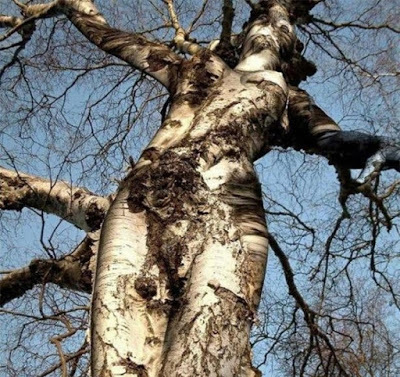


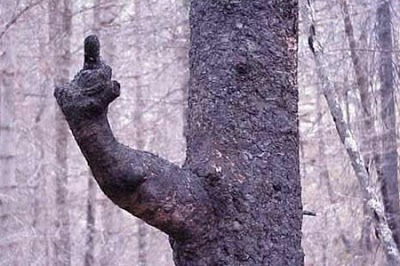

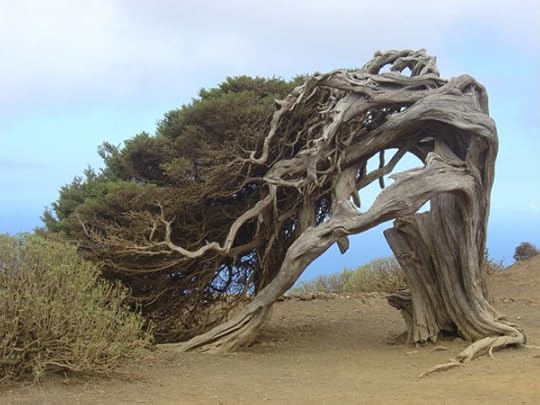
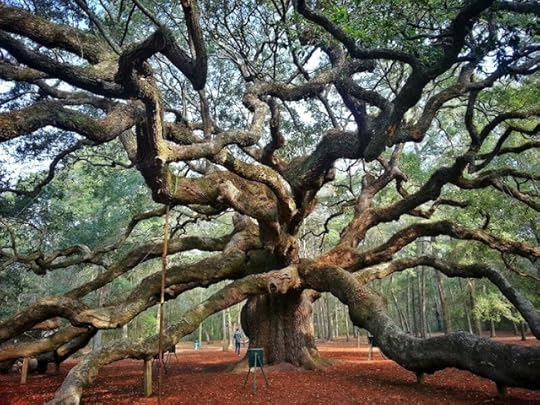

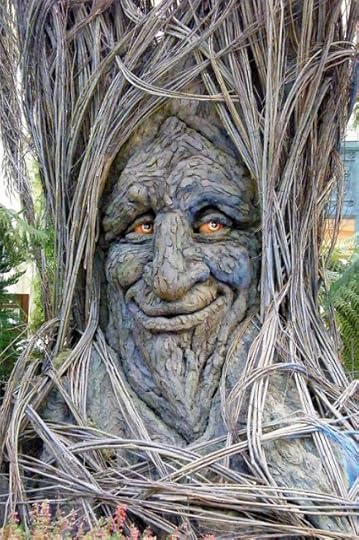

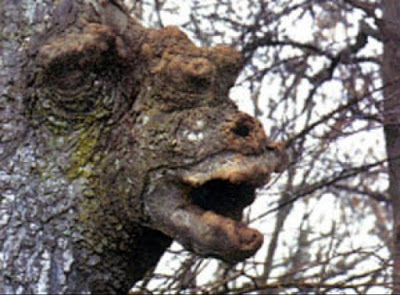
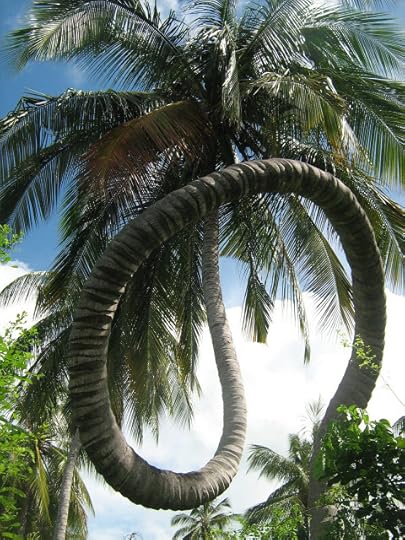




Clancy's comment: Extraordinary. I'm sure nature is trying to tell us something.
I'm ...
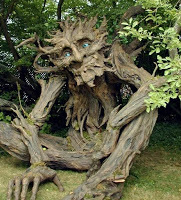

Published on March 23, 2018 14:42
March 22, 2018
23 March 2018 - ALEXANDER GRAHAM BELL
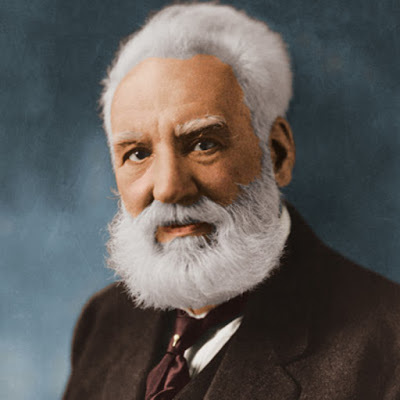
ALEXANDER GRAHAM BELL
G'day folks,
Welcome to some background on a man who changed the world, and often not for the better when I see the addiction to mobile phones. Notwithstanding, he was a smart man.
Alexander Graham Bell (1847-1922), the Scottish-born American scientist best known as the inventor of the telephone, worked at a school for the deaf while attempting to invent a machine that would transmit sound by electricity. Bell was granted the first official patent for his telephone in March 1876, though he would later face years of legal challenges to his claim that he was its sole inventor, resulting in one of history’s longest patent battles. Bell continued his scientific work for the rest of his life, and used his success and wealth to establish various research centers nationwide.
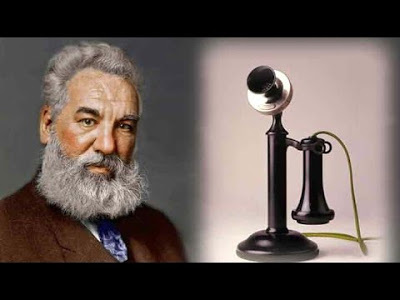
Bell owes his immortality to his having been the first to design and patent a practical device for transmitting the human voice by means of an electric current. But Bell always described himself simply as a “teacher of the deaf,” and his contributions in that field were of the first order.
Bell, who was born in Edinburgh, Scotland, was educated there and at the University of London. He also studied under his grandfather, Alexander Bell, a noted speech teacher. He taught elocution, assisted his father, also a speech teacher and noted phonetician, and taught at a school for the deaf in England, using his father’s methods. In 1870, Bell immigrated with his parents to Canada.
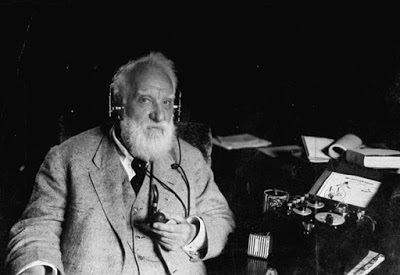
Two years later he established a school for the deaf in Boston, Massachusetts, and the following year became a professor in speech and vocal physiology at Boston University. While teaching he experimented with a means of transmitting several telegraph messages simultaneously over a single wire and also with various devices to help the deaf learn to speak, including a means of graphically recording sound waves.
In 1874 the essential idea of the telephone formed in his mind. As he later explained it, “If I could make a current of electricity vary in intensity precisely as the air varies in density during the production of sound, I should be able to transmit speech telegraphically.” Two years later he applied for a patent, which was granted on March 7, 1876. On March 10, the first coherent complete sentence—the famous “Mr. Watson, come here; I want you”—was transmitted in his laboratory.
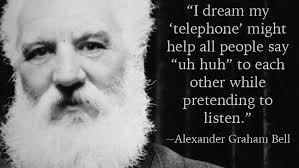
In later years Bell experimented with a means to detect metal in wounds and with a vacuum-jacket respirator that led to the development of the iron lung. He helped bring Thomas A. Edison’s phonograph to commercial practicality and experimented with hydrofoil boats and with airplanes as early as the 1890s.
With the wealth derived from the telephone, Bell was able to assist the careers of other scientists. He also founded and helped finance the journal Science, today the premier American scientific journal, and the National Geographic Society.
While constantly engaged in scientific experiments, Bell crusaded tirelessly on behalf of the deaf, encouraging their integration into society with the help of lip-reading and other techniques. In 1890 he founded the Alexander Graham Bell Association for the Deaf.
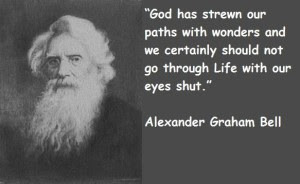
He died in 1922 at his summer home on Cape Breton Island, Nova Scotia. People throughout North America were urged to refrain from making phone calls during his burial so that telephones would remain silent as a tribute.

Clancy's comment: Helloooooooooooooooo!
I'm ...


Published on March 22, 2018 13:25
March 21, 2018
22 March 2018 - THE EMU - AUSTRALIA’S LARGEST NATIVE BIRD
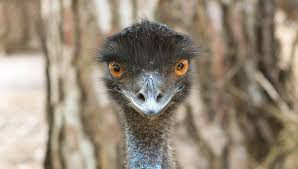
THE EMU - AUSTRALIA’S LARGEST NATIVE BIRD -
G'day folks,
Welcome to some amazing facts about a big bird that roams the Australian bush and outback.
The emu is the largest birdnative to Australiaand the second largest birdin the world, behind the ostrich. The emu is most commonly found in wooded areas but emus are common all over Australia.
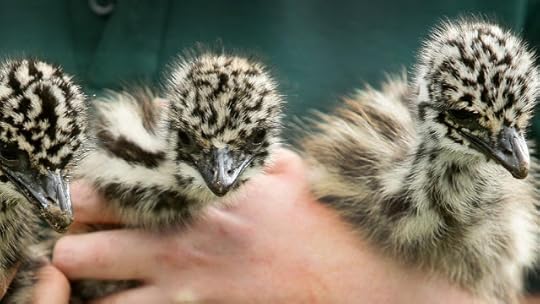
Studies show that emus seem to avoid dense forests and largely populated areas, as this means that the emu can be more aware of it's surroundings. Although the emu does prefer to be in woodland or shrub land where there is plenty to eat as well as cover, they like to know exactly what is around them.In Australiathere are enormous emu farms where the emu is bred for meat, oil and leather. Emu oil is said to hold medicinal healing properties when rubbed onto painful joints and is commonly used across the world mainly for sports injuries but also arthritis.
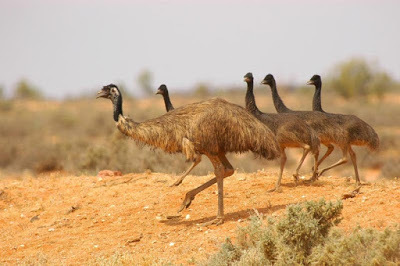
Emus can grow to nearly 2 meters tall and have have extremely soft feathers. Emus are flightless birdsmainly due to their enormous size, which means that they are just too heavy to fly. Emus are nomadic animalswhich means that they rarely stay in the same place for long. This travelling lifestylemeans that the emu can make the most of the food that is available and emus are known to travel long distances in orderto find more food.

Emus are omnivorous birdsfeeding mainly on fruits, seeds and insects. Emus are generally found close to water and are therefore not keen on more arid regions. However, the introduction of better water supplies to inland Australiahas meant that despite the population decrease of the wild emu, their range has expanded.
Emus have long necks and long legs in comparison to their body size. The long, flexible legs of the emu mean that the emu is able to run a high speeds, with emus generally running at around 25 mph. Emus however are able to reach a top speed 30 mph in short bursts should the emu need to get away quickly from a dangerous situation.
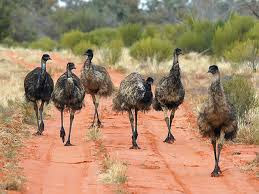
Emus form breeding pairs during the Australian summer (December) and mating usually occurs when the climate becomes cooler a few months later. The female emu can lay up to 20 eggs (although 12 is the average number), which hatch after a couple of months. The male emu eats very little throughout the breeding process and it is he that incubates the eggs. By the time the emu chicks hatch, the male emu has lost a considerable amount of body weightand lives of his fat reserves.

Emus have few predatorsdue to their large sizeand fast speed. Emus are most commonly preyed upon by wild dogsand crocodilesand are hunted by humans. Emu eggs are eaten by many animalsincluding dogs, birdsof preyand large reptiles.
Emus tend to live for between 10 and 20 years in the wild, although it is not uncommon for an emu to be more than 30 years old, particularly when in captivity. Emus are known to be very versatile animalsand can easily adapt to many different environments.

Clancy's comment: Yep, they sure are big, and fast. The males are similar to the male Emperor Penguin who also looks after the eggs, doesn't eat and loses a considerable amount of weight.
I'm ...
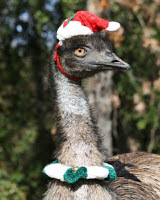

Published on March 21, 2018 14:27
March 20, 2018
21 March 2018 - QUOTES FROM FAMOUS WRITERS
QUOTES FROM FAMOUS WRITERS
G'day folks,
Here are some quotes that might inspire you writers and authors.










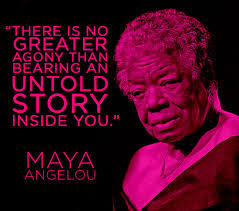

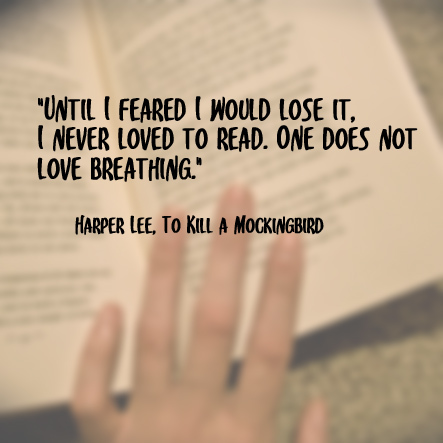


Clancy's comment: I hope these have fired you up to keep writing. So, get on with it.
I'm ...


Published on March 20, 2018 16:15
March 19, 2018
20 March 2018 - THE GREAT DEPRESSION
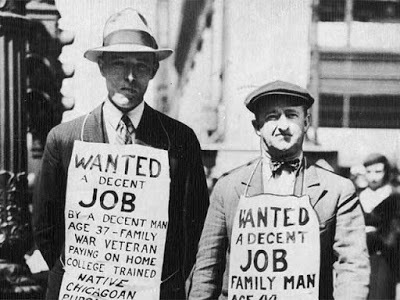
THE GREAT DEPRESSION
G'day folks,
Welcome to some background on a very unfortunate time in history. The Great Depression lasted from 1929 to 1939, and was the worst economic downturn in the history of the industrialized world. It began after the stock market crash of October 1929, which sent Wall Street into a panic and wiped out millions of investors. Over the next several years, consumer spending and investment dropped, causing steep declines in industrial output and employment as failing companies laid off workers. By 1933, when the Great Depression reached its lowest point, some 15 million Americans were unemployed and nearly half the country’s banks had failed.
Causes of the Great Depression
Throughout the 1920s, the U.S. economy expanded rapidly, and the nation’s total wealth more than doubled between 1920 and 1929, a period dubbed “the Roaring Twenties.”
The stock market, centered at the New York Stock Exchange on Wall Street in New York City, was the scene of reckless speculation, where everyone from millionaire tycoons to cooks and janitors poured their savings into stocks. As a result, the stock market underwent rapid expansion, reaching its peak in August 1929.
By then, production had already declined and unemployment had risen, leaving stock prices much higher than their actual value. Additionally, wages at that time were low, consumer debt was proliferating, the agricultural sector of the economy was struggling due to drought and falling food prices, and banks had an excess of large loans that could not be liquidated.
The American economy entered a mild recession during the summer of 1929, as consumer spending slowed and unsold goods began to pile up, which in turn slowed factory production. Nonetheless, stock prices continued to rise, and by the fall of that year had reached stratospheric levels that could not be justified by expected future earnings.
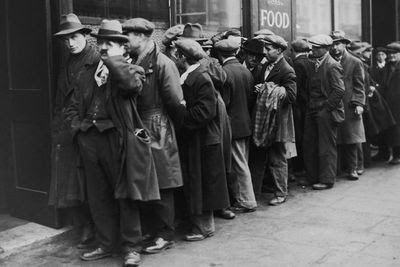
The Stock Market Crash of 1929 On October 24, 1929, as nervous investors began selling overpriced shares en masse, the stock market crashthat some had feared happened at last. A record 12.9 million shares were traded that day, known as “Black Thursday.”Five days later, on October 29 or “Black Tuesday,” some 16 million shares were traded after another wave of panic swept Wall Street. Millions of shares ended up worthless, and those investors who had bought stocks “on margin” (with borrowed money) were wiped out completely.
As consumer confidence vanished in the wake of the stock market crash, the downturn in spending and investment led factories and other businesses to slow down production and begin firing their workers. For those who were lucky enough to remain employed, wages fell and buying power decreased.
Many Americans forced to buy on credit fell into debt, and the number of foreclosures and repossessions climbed steadily. The global adherence to the gold standard, which joined countries around the world in a fixed currency exchange, helped spread economic woes from the United States throughout the world, especially Europe.
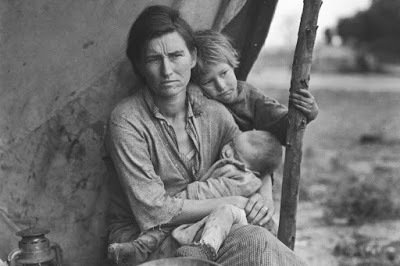
Bank Runs and the Hoover Administration
Despite assurances from President Herbert Hooverand other leaders that the crisis would run its course, matters continued to get worse over the next three years. By 1930, 4 million Americans looking for work could not find it; that number had risen to 6 million in 1931.
Meanwhile, the country’s industrial production had dropped by half. Bread lines, soup kitchens and rising numbers of homeless people became more and more common in America’s towns and cities. Farmers couldn’t afford to harvest their crops, and were forced to leave them rotting in the fields while people elsewhere starved.
In the fall of 1930, the first of four waves of banking panics began, as large numbers of investors lost confidence in the solvency of their banks and demanded deposits in cash, forcing banks to liquidate loans in order to supplement their insufficient cash reserves on hand. Bank runs swept the United States again in the spring and fall of 1931 and the fall of 1932, and by early 1933 thousands of banks had closed their doors.
In the face of this dire situation, Hoover’s administration tried supporting failing banks and other institutions with government loans; the idea was that the banks in turn would loan to businesses, which would be able to hire back their employees.
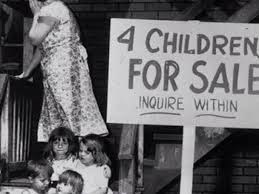
FDR and the New Deal
Hoover, a Republican who had formerly served as U.S. secretary of commerce, believed that government should not directly intervene in the economy, and that it did not have the responsibility to create jobs or provide economic relief for its citizens.
In 1932, however, with the country mired in the depths of the Great Depression and some 15 million people (more than 20 percent of the U.S. population at the time) unemployed, Democrat Franklin D. Roosevelt won an overwhelming victory in the presidential election.
By Inauguration Day (March 4, 1933), every U.S. state had ordered all remaining banks to close at the end of the fourth wave of banking panics, and the U.S. Treasury didn’t have enough cash to pay all government workers. Nonetheless, FDR (as he was known) projected a calm energy and optimism, famously declaring that “the only thing we have to fear is fear itself.”
Roosevelt took immediate action to address the country’s economic woes, first announcing a four-day “bank holiday” during which all banks would close so that Congress could pass reform legislation and reopen those banks determined to be sound. He also began addressing the public directly over the radio in a series of talks, and these so-called “fireside chats” went a long way towards restoring public confidence.
During Roosevelt’s first 100 days in office, his administration passed legislation that aimed to stabilize industrial and agricultural production, create jobs and stimulate recovery. In addition, Roosevelt sought to reform the financial system, creating the Federal Deposit Insurance Corporation (FDIC) to protect depositors’ accounts and the Securities and Exchange Commission (SEC) to regulate the stock market and prevent abuses of the kind that led to the 1929 crash.

The Long, Hard Road to Recovery
Among the programs and institutions of the New Deal that aided in recovery from the Great Depression were the Tennessee Valley Authority (TVA), which built dams and hydroelectric projects to control flooding and provide electric power to the impoverished TennesseeValley region, and the Works Progress Administration (WPA), a permanent jobs program that employed 8.5 million people from 1935 to 1943.
After showing early signs of recovery beginning in the spring of 1933, the economy continued to improve throughout the next three years, during which real GDP (adjusted for inflation) grew at an average rate of 9 percent per year. A sharp recession hit in 1937, caused in part by the Federal Reserve’s decision to increase its requirements for money in reserve. Though the economy began improving again in 1938, this second severe contraction reversed many of the gains in production and employment and prolonged the effects of the Great Depression through the end of the decade.
Depression-era hardships had fueled the rise of extremist political movements in various European countries, most notably that of Adolf Hitler’sNazi regime in Germany. German aggression led war to break out in Europe in 1939, and the WPA turned its attention to strengthening the military infrastructure of the United States, even as the country maintained its neutrality.
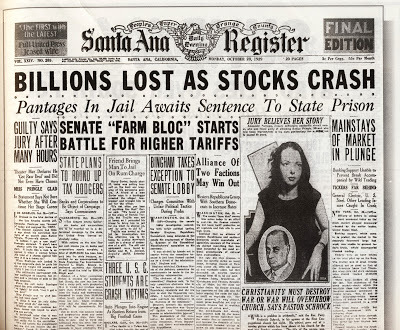
The Great Depression Ends and World War II Begins
With Roosevelt’s decision to support Britain and France in the struggle against Germany and the other Axis Powers, defense manufacturing geared up, producing more and more private sector jobs. The Japanese attack on Pearl Harborin December 1941 led to America’s entry into World War II, and the nation’s factories went back in full production mode.
This expanding industrial production, as well as widespread conscription beginning in 1942, reduced the unemployment rate to below its pre-Depression level.
When the Great Depression began, the United States was the only industrialized country in the world without some form of unemployment insurance or social security. In 1935, Congress passed the Social Security Act, which for the first time provided Americans with unemployment, disability and pensions for old age.
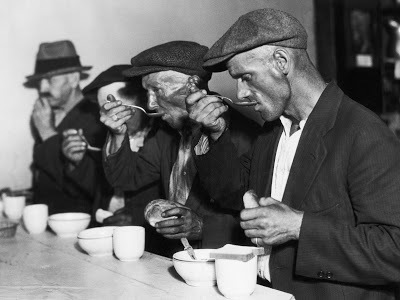
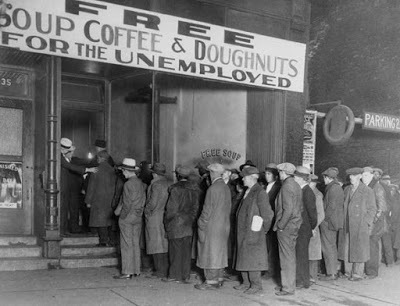
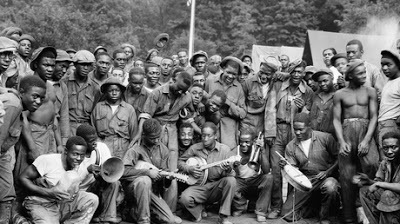
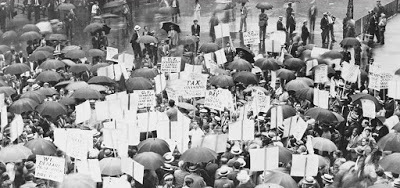
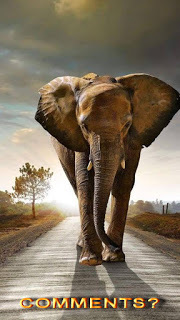
Clancy's comment: Tough times indeed. Not sure why, but I've always been keen to write a novel involving folks in the 1929 or 1913 Depression. Should be a challenging but enjoyable task I reckon.
I'm ...
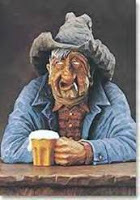

Published on March 19, 2018 15:38
March 18, 2018
19 March 2018 - VICTORIA BECKHAM

VICTORIA BECKHAM
G'day folks,
Welcome to some background on a woman who hit the world as a pop star, but has gone on to achieve other claims to fame. Pop singer Victoria Beckham rose to fame in the 1990s as a member of the Spice Girls. She is also known for her successful fashion empire and her marriage to former soccer star David Beckham.
Who Is Victoria Beckham?
Victoria Beckham rose to fame as "Posh Spice" in the British pop group the Spice Girls. The group released their debut album, Spice, in 1996, a smash success that sold more than 20 million copies worldwide. After the group split up in 2000, Beckham embarked on a solo musical career and later explored her love of fashion, developing a line of jeans called VB Rocks in 2004. In 2007, Beckham went on a reunion tour with the Spice Girls, but she ultimately focused her career on fashion, launching her own fashion line in 2008. Beckham also makes headlines because of her high-profile marriage to former soccer star David Beckham.
Aspiring Dancer
Victoria Adams was born on April 17, 1974, in Hertfordshire, England. After achieving success as a pop singer in the 1990s, Beckham became one of the most photographed women in the world, with the tabloids seeming to follow nearly every move that she and her husband, soccer star David Beckham, make. Capitalizing on her broad exposure, Victoria Beckham built her own brand, consisting of clothing, perfume and sunglasses.
Raised in an affluent family, Beckham started studying ballet at a young age. She pursued her interest in dance at the Laine Arts Theatre College in Surrey when she was 17. After three years there, Beckham moved to London to try to make it as a dancer. Her lucky break came when she answered a casting call seeking energetic and hard-working female performers in 1993. Out of the 400 women who applied, Beckham was chosen to become part of a new all-female pop music group.

Spice Girls
Created by manager Chris Herbert, the band that would become known as the Spice Girls started rehearsing together. The final lineup came together by mid-1993 and included Melanie Brown, Melanie Chisholm, Geri Halliwell, Emma Bunton and Beckham. The group wanted more creative control and soon broke off with Herbert. They later signed with manager Brian Fuller and landed a contract with Virgin Records.
Each of the five members of the Spice Girls developed their own persona: Melanie Brown was known as "Scary Spice"; Melanie Chisholm was "Sporty Spice"; Geri Halliwell was "Ginger Spice"; Emma Bunton was "Baby Spice"; and Beckham was "Posh Spice." They released their debut album, Spice, in 1996 and reached the top of the charts with the catchy dance-pop song "Wannabe" the following year. The follow-up single, "Say You'll Be There," climbed as high as No. 3 on the Billboard 200 chart. The album eventually sold more than 20 million copies worldwide.
The group's "girl power" message attracted a substantial audience, especially young teenage girls. In 1997, the group released their second album, Spiceworld,and starred in a film of the same name early the following year. While they scored a hit with the song "2 Become 1," the Spice Girls failed to duplicate the success of their debut recording. The film featured cameos by such performers as Elvis Costello, Bob Geldof and Elton John, and had some success at the box office, netting close to $30 million.
In 2000, the Spice Girls released the album Forever, recorded after Halliwell had left the group. As the remaining members drifted apart to pursue other projects, Beckham went solo, releasing a self-titled album in 2001.
The Spice Girls reunited for a series of concerts in 2007 and 2008. In June 2012, they reunited again, this time to announce the creation of a new musical about their rise and fall, Viva Forever!, written by Jennifer Saunders and named after the group's 1998 No. 1 single. That year, the group also performed at the closing ceremony of the Summer Olympic Games, held in London.
Whispers of another reunion surfaced in February 2018, when the Spice Girls met with former manager Simon Fuller in London. One week later, TMZ reported that a summer tour was indeed in the works, though the group had yet to formally confirm anything.
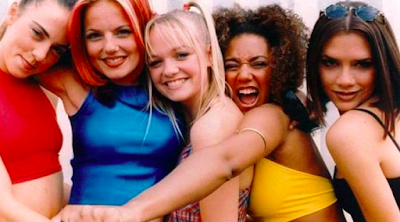
Marriage to David Beckham
In 1997, Beckham met soccer star David Beckham, then with Manchester United. The two soon became one of Britain's most popular couples, known in the tabloid as "Posh" and "Becks." They became engaged in 1998 and welcomed their first child together, son Brooklyn, on March 4, 1999. That summer, the couple wed in a lavish ceremony at a castle in Ireland. The Beckhams have three other children: sons Romeo (born September 1, 2002) and Cruz (February 20, 2005) and daughter Harper (July 10, 2011).
The Beckhams packed up for a move to Spain when David signed a lucrative deal to play for the Real Madrid club in 2003. Four years later it was on to America, where the well-known soccer star signed on to play for the L.A. Galaxy. The arrival of the Beckhams in Hollywood created quite a media frenzy. Beckham's friend and neighbor, model and TV personality Heidi Klum, told Harper's Bazaar: "Under all that glam and glitz is a really lovely person who is genuine, funny, sexy and such a great mother."

Fashion Empire
Stepping away from the music scene, Beckham explored her love of fashion. She developed a line of jeans called VB Rocks for the Rock & Republic brand in 2004. In 2006, Beckham shared her fashion tips in the book That Extra Half an Inch: Hair, Heels and Everything in Between. One year later, Beckham launched her own line of sunglasses called dVb Eyewear, and a line of jeans soon followed.
Although Beckham has rejoined the Spice Girls for their reunions, she has said several times that her main focus is fashion. She expanded her clothing line in 2008, introducing a new line of dresses. "Everything that I design I would wear myself," Beckham once said. Her business empire also includes a line of fragrances.
In 2009, Beckham became the model for the Emporio Armani underwear line for women. Her husband had previously been featured in ads for their men's line. Beckham explained that she took the job because "when I'm 50, I can look back and say, 'Hey, Mommy didn't look too bad after having three kids,'" she told Time.
Beckham maintains a light-hearted attitude about being the target of frequent tabloid news stories. "I've had so many ludicrous things written about me and my family and my friends that it's almost like a joke," she told Allure magazine. For right now, Beckham is focused on her work as a designer. "I'm so grateful to the fashion industry for accepting me and giving me a chance."

Other Projects
Beckham penned an autobiography, Learning to Fly, which became a best-seller in Britain following its 2001 publication.
Beckham invited television audiences inside her life with the reality special Victoria's Secrets, which aired on British television in 2000. She has been the focus of several other television programs since then, including Being Victoria Beckham, The Real Beckhams, Victoria Beckham - A Mile In Their Shoes and Victoria Beckham: Coming to America.
Beckham's success has also attracted its share of unwanted attention: In 2002, authorities uncovered a plot to kidnap the pop star and hold her for ransom.

Clancy's comment: And, I'd hate to mention the figure I heard a few years back as to what her husband was paid per month to play soccer / football. It was gob smacking, but fame and fortune do not always lead to happiness.
I'm ...


Published on March 18, 2018 13:45
March 17, 2018
18 March 2018 - RUPERT MURDOCH – MEDIA MAGNATE
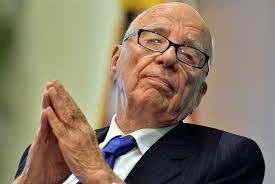
RUPERT MURDOCH- MEDIA MAGNATE -
G'day folks,
Welcome to some background on a man who has wielded some considerable power for many decades as a media magnate.Media magnate Rupert Murdoch is the founder and head of News Corporation, a global media conglomerate. He created Fox Broadcasting Company in 1986.
Who Is Rupert Murdoch?
Rupert Murdoch was born on March 11, 1931, in Melbourne, Australia. His father was a famous war correspondent and newspaper publisher. Murdoch inherited his father's papers, the Sunday Mail and the News, and continued to purchase other media outlets over the years. In the 1970s, he started buying American newspapers. Murdoch branched out into entertainment with the purchase of 20th Century Fox Film Corp. in 1985, and later sparked transformation of the cable TV landscape by introducing Fox News. Four years after restructuring his empire into two divisions, 21st Century Fox Inc. and News Corp., Murdoch in 2017 sold much of 21st Century Fox to the Walt Disney Company.
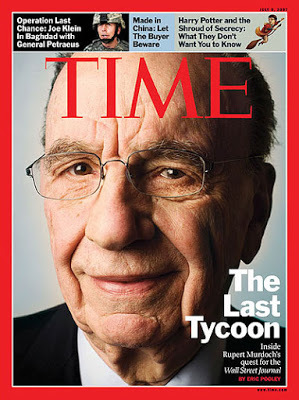
Early Life and Career
Keith Rupert Murdoch was born on March 11, 1931, on a small farm about 30 miles south of Melbourne, Australia. Since birth, Murdoch has gone by his middle name, Rupert, the name of his maternal grandfather. His father, Keith Murdoch, was a well-known Australian journalist who owned a number of local and regional newspapers: the Herald in Melbourne, the Courier-Mail in Brisbane and the News and Sunday Mail.
The family farm was named Cruden Farm, after the Scottish village from which both of Murdoch's parents had emigrated. The house at Cruden Farm was a stone building with colonial pillars, adorned with original paintings, a grand piano and a library of books, situated amongst green expanses of farmland and bordered by Ghost Gum trees. Murdoch's favorite childhood pastime was horseback riding. His mother later described her son's childhood: "I think it was a very normal childhood, not in any way elaborate or an overindulged one. I suppose he was lucky to be brought up in attractive—you could say aesthetic—surroundings."
The son of a well-respected journalist, Murdoch was groomed to enter the world of publishing from a very young age. He remembers, "I was brought up in a publishing home, a newspaper man's home, and was excited by that, I suppose. I saw that life at close range, and after the age of 10 or 12 never really considered any other."
Murdoch graduated from Geelong Grammar, a prestigious Australian boarding school, in 1949 before crossing the ocean to attend Worcester College at Oxford University in England. According to one of his early biographers, Murdoch was a "a normal, red-blooded college student who had many friends, chased girls, went on the usual drinking binges, engaged in slapdash horseplay, tried at sports and never had enough money, no doubt due to his gambling."
Murdoch's fun-loving youthful ways came to an abrupt end when his father suddenly passed away in 1952, leaving his son the owner of his Adelaide newspapers, the News and the Sunday Mail. After preparing himself with a brief apprenticeship under Lord Beaverbrook at the Daily Express in London, in 1953, a 22-year-old Murdoch returned to Australia to take up the reins of his father's papers.
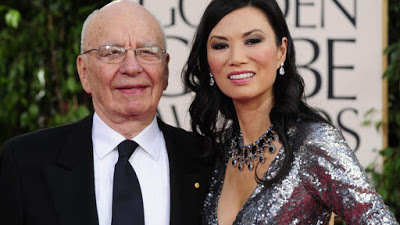
Newspaper Mogul
Immediately upon assuming control of the Sunday Mail and the News, Murdoch immersed himself in all aspects of the papers' daily operations. He wrote headlines, redesigned page layouts and labored in the typesetting and printing rooms. He quickly converted the News into a chronicle of crime, sex and scandal, and while these changes were controversial, the paper's circulation soared.
Only three years later, in 1956, Murdoch expanded his operations by purchasing the Perth-based Sunday Times, and revamped it in the sensationalist style of the News. Then, in 1960, Murdoch broke into the lucrative Sydney market by purchasing the struggling Mirror and slowly transforming it into Sydney's best-selling afternoon paper. Encouraged by his success and harboring ambitions of political influence, in 1965 Murdoch founded Australia's first national daily paper, the Australian, which helped to rebuild Murdoch's image as a respectable news publisher.
In the fall of 1968, 37 years old and owner of an Australian news empire valued at $50 million, Murdoch moved to London and purchased the enormously popular Sunday tabloid The News of the World. One year later, he purchased another struggling daily tabloid, the Sun, and again oversaw a successful transformation with his formula of reporting heavily on sex, sports and crime. The Sunalso attracted readers by including pictures of topless women in its infamous "Page 3" feature.
Murdoch next expanded his news empire to the United States, with the 1973 acquisition of a Texas-based tabloid, the San Antonio News. As he had done in Australia and England, Murdoch quickly set out to expand across the country, founding a national tabloid, the Star, in 1974 and purchasing the New York Post in 1976. In 1979, Murdoch founded News Corporation, commonly referred to as News Corp., as a holding company for his various media properties.
Throughout the 1980s and 1990s, Murdoch acquired news outlets around the globe at a dizzying pace. In the United States, he bought up the Chicago Sun-Times, the Village Voice and New Yorkmagazine. In England, he acquired the eminently respectable Times and Sunday Times of London.
Emergence of Fox It was also during these years that Murdoch began expanding his media empire into television and entertainment. In 1985, he purchased 20th Century Fox Film Corporation as well as several independent television stations and consolidated these companies into Fox, Inc.—which has since become a major American television network.
In 1990, he founded Star TV, a Hong Kong-based television broadcasting company. Additionally, after purchasing several prestigious American and British academic and literary publishing companies throughout the late 1980s, he consolidated them into HarperCollins in 1990. Murdoch has also invested in sports; he is a part owner of the Los Angeles Kings NHL franchise, the Los Angeles Lakers NBA franchise and the Staples Center, as well as Fox Sports 1 and the Fox Sports website.
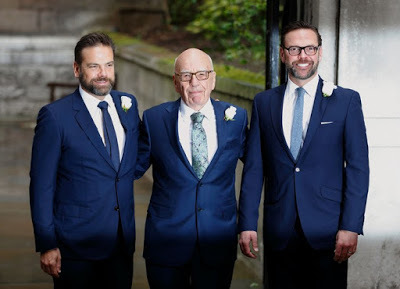
Media Empire With the dawn of the new century, Murdoch continued to expand News Corp's holdings to control more and more of the media people view on a daily basis. In 2005, he purchased Intermix Media, the owner of the popular social networking site MySpace.com. Two years later, in 2007, the longtime newspaper mogul made headlines himself with the purchase of Dow Jones, the owner of the Wall Street Journal.
Murdoch has drawn wide criticism for monopolizing control over international media outlets as well as for his conservative political views, which are often reflected in the reporting of Murdoch-controlled outlets such as Fox News. In the 2010 American midterm elections, News Corp donated $1 million each to the Republican Governors Association and the U.S. Chamber of Commerce, a group supporting Republican candidates. Critics argued that the owner of major news sources covering the election should not contribute directly to the political campaigns involved.
Murdoch's empire, however, was dealt a significant blow in 2011. His London tabloid, The News of the World, was caught up in a phone hacking scandal. Several editors and journalists were brought up on charges for illegally accessing the voicemails of some of Britain's leading figures. Rupert himself was called to testify that same year, and he shut down The News of the World.
News Corp later paid damages to some of individuals who were hacked.Despite this scandal, News Corp retains a significant share of virtually all forms of media across the globe. Murdoch owns many of the books and newspapers people read, the television shows and films they watch, the radio stations they listen to, the websites they visit, and the blogs and social networks they create.
In 2013, he announced a significant restructuring of his empire. Murdoch decided to divide his business into two companies—21st Century Fox Inc. and News Corp. This move separated his entertainment holdings from his publishing interests. According to the Los Angeles Times, Murdoch explained that "Both companies will be uniquely positioned to execute on their respective strategic objectives and to lead their industries forward."
Although he never could have imagined the power he would one day wield, this kind of influence was exactly what Murdoch sought as a young publisher building his empire. "I sensed the excitement and the power," he recalls. "Not raw power, but the ability to influence at least the agenda of what was going on." And after six decades working in the media, Murdoch has said that he could not imagine his life any other way. "If you're in the media, particularly newspapers, you are in the thick of all the interesting things that are going on in a community, and I can't imagine any other life that one would want to dedicate oneself to," he said.
New Leadership and Sale to Disney
In June 2015, news broke that Murdoch would be handing over the leadership of 21st Century Fox to his son James. Murdoch would remain with the organization as executive co-chairman, sharing the role with his oldest son, Lachlan.
In July 2016, Roger Ailes,chairman and CEO of Fox News and the Fox Television Stations Group, resigned due to a sexual harassment lawsuit filed by Fox television host Gretchen Carlson. Murdoch announced he would assume Ailes's role temporarily.
Amid the restructuring of 21st Century Fox, the company engaged in talks with Walt Disney over the sale of its properties. While discussions were said to have ended by November 2017, they reportedly renewed within a few weeks, with Fox considering offers for its movie and cable networks and international divisions.
In mid-December, terms of an agreement were reached in which Disney would purchase most of 21st Century Fox in an all-stock transaction valued at around $52.4 billion. Murdoch, who retained control of Fox News, the Fox broadcast network and the FS1 sports cable channel, said he would spin those assets into a newly listed company.
In February 2018, a Wired cover story revealed details of an ongoing feud between Murdoch and Facebook CEO Mark Zuckerberg.The feud reportedly dated back to at least 2007, with accusations that Murdoch's News Corp. had tried to ignite a scandal involving the presence of sexual predators on Facebook. Later, in a 2016 meeting, Murdoch took Zuckerberg to task for changing Facebook's news feed algorithm, giving the social platform the power to dramatically affect traffic for other sites. News Corp. reportedly threatened to retaliate via lobbying efforts and by launching an anti-Facebook campaign through its many outlets.
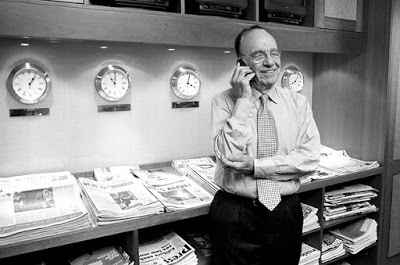
Personal Life
Rupert Murdoch married Patricia Booker in 1956. They had a daughter, Prudence, before divorcing in 1965. He married Anna Torv in 1967, and they had four children before eventually divorcing in 1999. Only 17 days after his second divorce, Murdoch married his third wife, Wendi Deng. They have two children.
Murdoch filed for divorce from Deng in June 2013, citing that the "relationship between husband and wife had broken down irretrievably" in court papers. The news of the split came as a surprise to some, but there were some rumors of trouble in the marriage in recent years. The divorce became final in 2014.
In January 2016, Murdoch became engaged to Mick Jagger's ex, Jerry Hall. The couple reportedly began seeing each other the previous summer. They tied the knot on March 4, 2016, in London.

Clancy's comment: He is a man who is no doubt smart, but there have been times when he didn't impress me. Imagine the alimony he has paid over the years?
I'm ...


Published on March 17, 2018 13:33
March 16, 2018
17 March 2018 - MOVING PICTURES
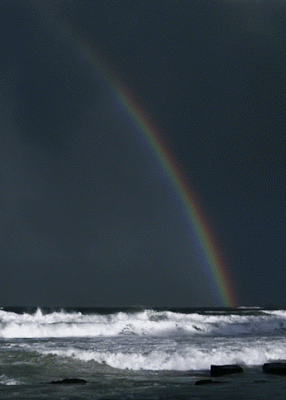
MOVING PICTURES
G'day folks,
Welcome to some more of those moving pictures.









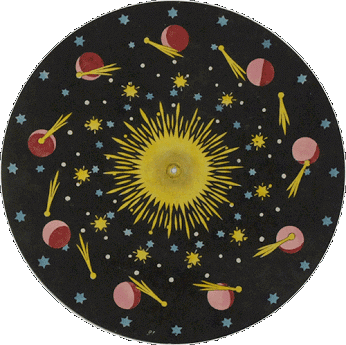
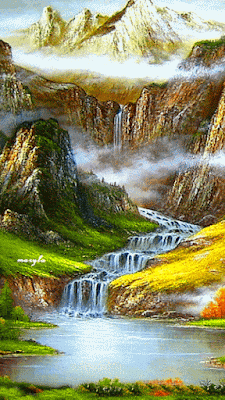


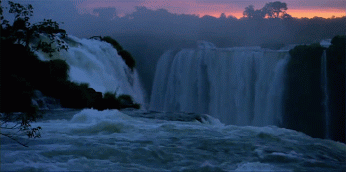

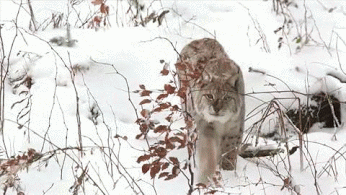






Clancy's comment: These always amaze me.
I'm ...

Published on March 16, 2018 14:24



